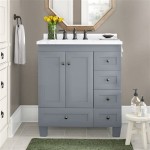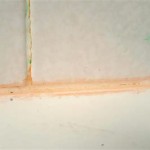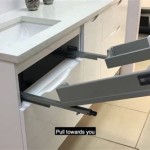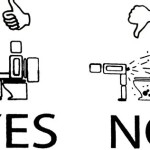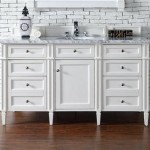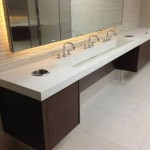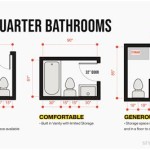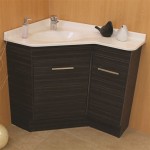Bathroom Vanity CAD Blocks: A Comprehensive Guide
Bathroom vanity CAD blocks are essential digital assets for architects, interior designers, and construction professionals. These blocks represent standardized, pre-drawn representations of bathroom vanities, available in various styles, sizes, and configurations. Utilizing these blocks significantly streamlines the design and drafting process, promoting efficiency and accuracy in building projects.
CAD blocks, or Computer-Aided Design blocks, are pre-made drawings that can be inserted and reused in CAD software. They can be used to represent a wide range of architectural elements, including furniture, fixtures, and equipment. By using CAD blocks, designers can save time and effort by avoiding the need to draw each component from scratch. They also promote consistency across different projects, ensuring that the same standards are used for design and documentation.
The use of bathroom vanity CAD blocks is a critical component of Building Information Modeling (BIM) workflows. BIM is a process that involves creating and managing digital representations of physical and functional characteristics of places. CAD blocks embedded with relevant data can be readily integrated into BIM models, enriching the information associated with each element, supporting advanced analysis, and facilitating better coordination and collaboration.
Benefits of Using Bathroom Vanity CAD Blocks
Employing bathroom vanity CAD blocks provides a range of advantages for design professionals. These benefits span from time savings to improved accuracy and consistency across projects. The integration of these blocks into digital workflows leads to more efficient and reliable design processes.
Firstly, time efficiency is significantly enhanced. Manually drawing detailed bathroom vanities for each project is a time-consuming task. With CAD blocks, designers can simply insert a pre-drawn vanity into their drawings, instantly adding the element with all relevant details. This allows them to focus on other aspects of the design, such as spatial layout, material selection, and overall aesthetics. The time saved can be reinvested in refining other project elements and meeting deadlines more effectively.
Secondly, accuracy is improved through the use of CAD blocks. Each block is drawn to precise dimensions and specifications, ensuring that the representation of the vanity in the CAD drawing is accurate. This helps to minimize errors in the design and construction phases, preventing costly rework and delays. When combined with BIM, manufacturers' specifications and product details can be associated with the CAD block, providing a level of detail that is difficult to achieve with manual drafting.
Thirdly, consistency is maintained across multiple projects. Using the same set of CAD blocks for different projects ensures that all bathroom vanities are represented in a consistent manner. This helps to create a cohesive design language and reinforces brand identity. Furthermore, consistent use of CAD blocks simplifies the process of updating and maintaining existing drawings, as any changes to the block will be automatically reflected in all drawings that use it.
Finally, better visualization is achieved with detailed CAD blocks. High-quality CAD blocks can provide realistic representations of bathroom vanities, allowing designers and clients to visualize the finished space more accurately. This can help to identify potential problems early in the design process and make informed decisions about material selection and placement. Realistic CAD blocks can also be used to create compelling marketing materials and presentations.
Types of Bathroom Vanity CAD Blocks
Bathroom vanity CAD blocks are available in a wide variety of styles, sizes, and configurations. Understanding the different types of blocks available is essential for selecting the most appropriate ones for each project. The categorization can be based on various factors such as mounting type, style, and the number of sinks.
Wall-mounted vanities, also known as floating vanities, are a popular choice for modern bathrooms. These vanities are attached directly to the wall, creating a sleek and minimalist look. CAD blocks for wall-mounted vanities typically include details of the mounting hardware and wall support, ensuring that the vanity is properly installed. These blocks often incorporate information related to plumbing locations and minimal wall thicknesses needed for supporting the unit.
Freestanding vanities are another common type. These vanities stand on the floor and are available in a range of styles, from traditional to contemporary. CAD blocks for freestanding vanities typically include details of the base, legs, or feet, as well as the countertop and sink. They may also include details of storage options, such as drawers and cabinets. The CAD block designs must also account for ease of access to plumbing connections behind the unit.
Corner vanities are designed to fit into the corner of a bathroom, making them a space-saving option for small bathrooms. CAD blocks for corner vanities typically include details of the angled shape and how it integrates into the corner of the room. They are often designed with storage solutions that maximize the available space in the corner. Proper dimensioning of these blocks is crucial as corner installations often need tighter tolerances than other types.
Double vanities feature two sinks and are ideal for master bathrooms or bathrooms shared by multiple users. CAD blocks for double vanities typically include details of the countertop, sinks, and storage options, as well as the spacing between the sinks. These blocks must be carefully planned to accommodate the increased plumbing demand and space requirements. The size and configuration will vary significantly depending on the available space and the desired aesthetic.
Finally, ADA-compliant vanities are designed to meet the requirements of the Americans with Disabilities Act (ADA). These vanities typically have a lower height and provide ample knee space for wheelchair users. CAD blocks for ADA-compliant vanities typically include details of the knee space, grab bars, and other accessibility features. These blocks are crucial for ensuring that bathrooms are accessible to all users and comply with relevant regulations.
Selecting and Using Bathroom Vanity CAD Blocks
Selecting the appropriate bathroom vanity CAD blocks involves considering several factors, including the style and size of the vanity, the project requirements, and the compatibility with the CAD software being used. Once the blocks are selected, there are several steps to properly integrate them into the design.
When selecting CAD blocks, it is important to ensure that they are of high quality and accurately represent the desired vanity. Look for blocks that are drawn to scale, include detailed dimensions, and provide realistic representations of the vanity's materials and finishes. It is also important to check that the blocks are compatible with the CAD software being used and that they are properly organized and labeled.
Next, consider the project's specific requirements. Think about the overall style of the bathroom, the available space, and the needs of the users. Select CAD blocks that are appropriate for these requirements. For example, if the bathroom is small, a corner vanity or wall-mounted vanity may be the best option. If the bathroom is being designed for accessibility, ADA-compliant vanities will be needed.
After selecting the appropriate CAD blocks, the next step is to insert them into the CAD drawing. Most CAD software programs allow you to insert blocks from a library or file. Once the block is inserted, it can be positioned and scaled as needed. It is important to ensure that the vanity is placed accurately and that it aligns with other elements in the drawing, such as walls, plumbing fixtures, and electrical outlets.
Customize the CAD blocks as needed to fit the specific project requirements. This may involve changing the materials, finishes, or dimensions of the vanity. Most CAD software programs allow you to edit blocks, but it is important to be careful when making changes, as any modifications will affect all instances of the block in the drawing. Creating specific layers for different components of the CAD block, such as the countertop, sink, and cabinet, can facilitate easier editing and management.
Finally, ensure that all relevant information is documented regarding the CAD blocks used in the project. This may include the manufacturer, model number, and specifications of the vanity. Adding this information to the CAD drawing or BIM model can help to ensure that the correct vanity is installed during the construction phase. Furthermore, this data can be used for future maintenance or replacement purposes.

Free Bathroom Sinks Bundle Cad Blocks Dwg Dxf Format Cads

Vanity Basin With Cabinets Free Cad Drawings

Modern Bathroom Vanity Free Cad Drawings

Autocad Drawing Bathroom Vanity Furniture Dwg

Bathroom Double Sink Cad Block Dwg Blocks

Free Double Sink Top View Cad Block Dwg Dxf Format Cads

Bathroom Vanity Design In Autocad 2d Drawing Dwg File Cad

Bathroom Vanity Dwg Cad Block In Autocad Free Plan

Bathroom Vanity Unit Wardrobe Details With Mirror Cad Block Design Dwg File

Free Bathroom Cad Blocks Dwg Dxf Format Cads
Related Posts
